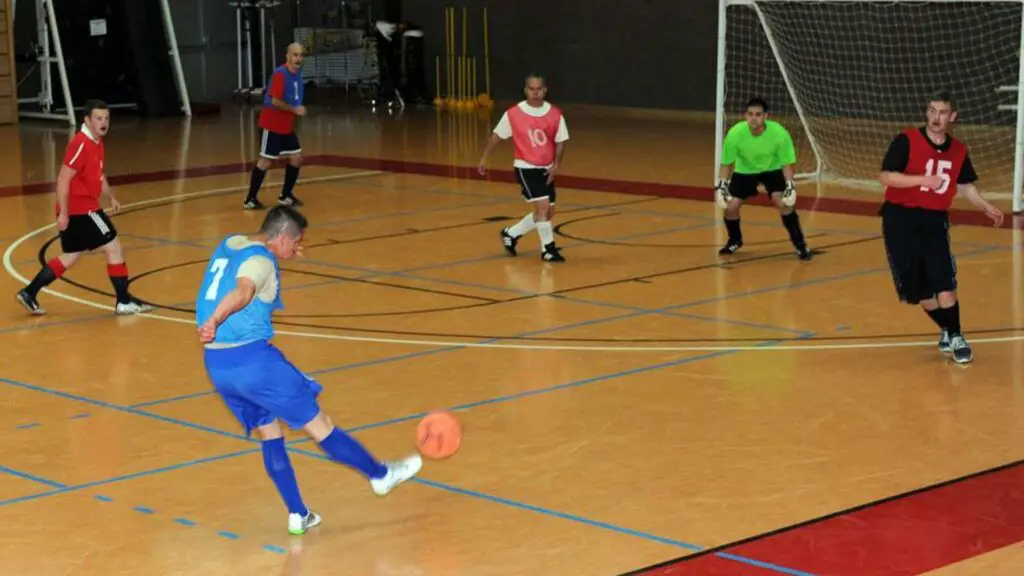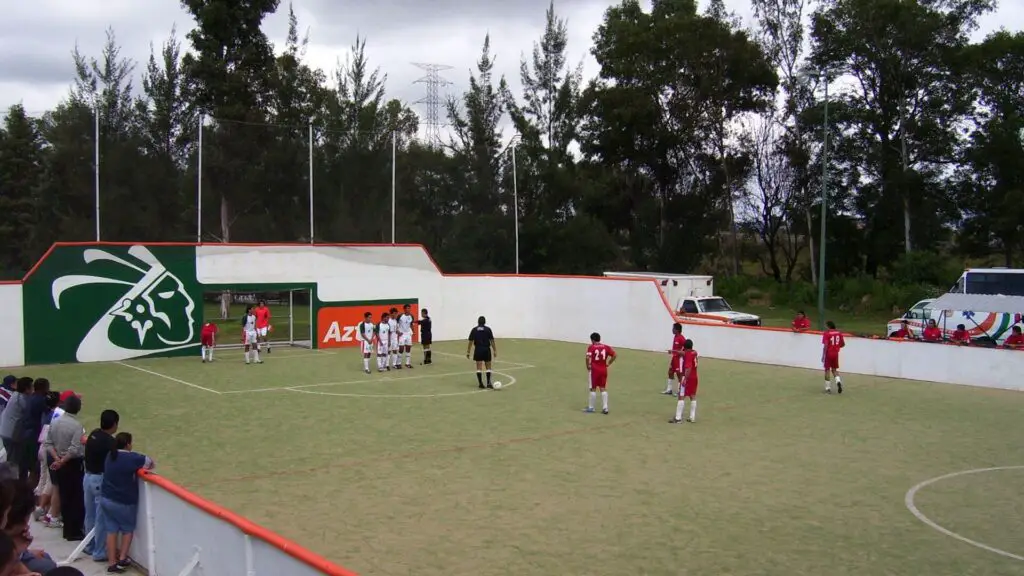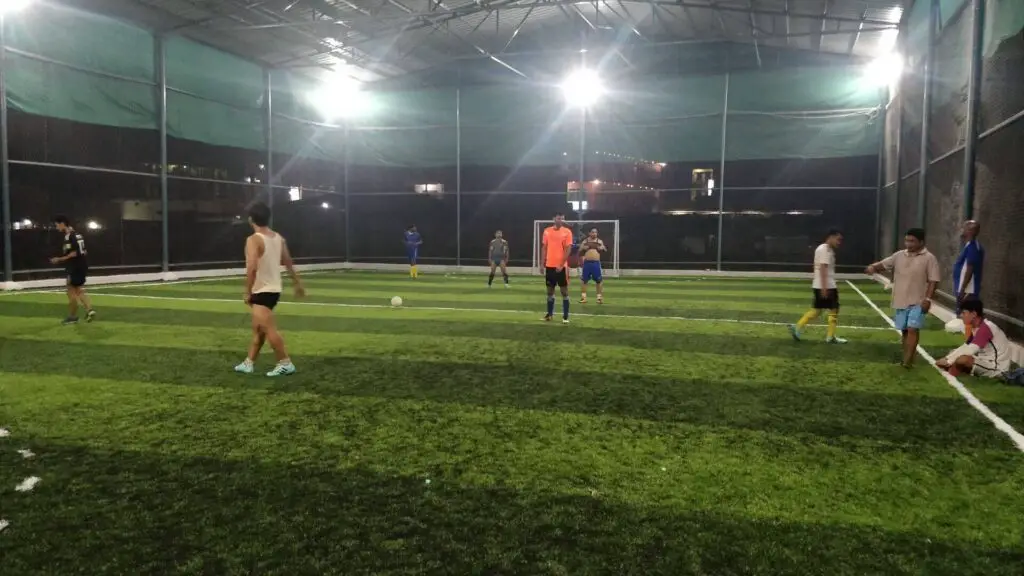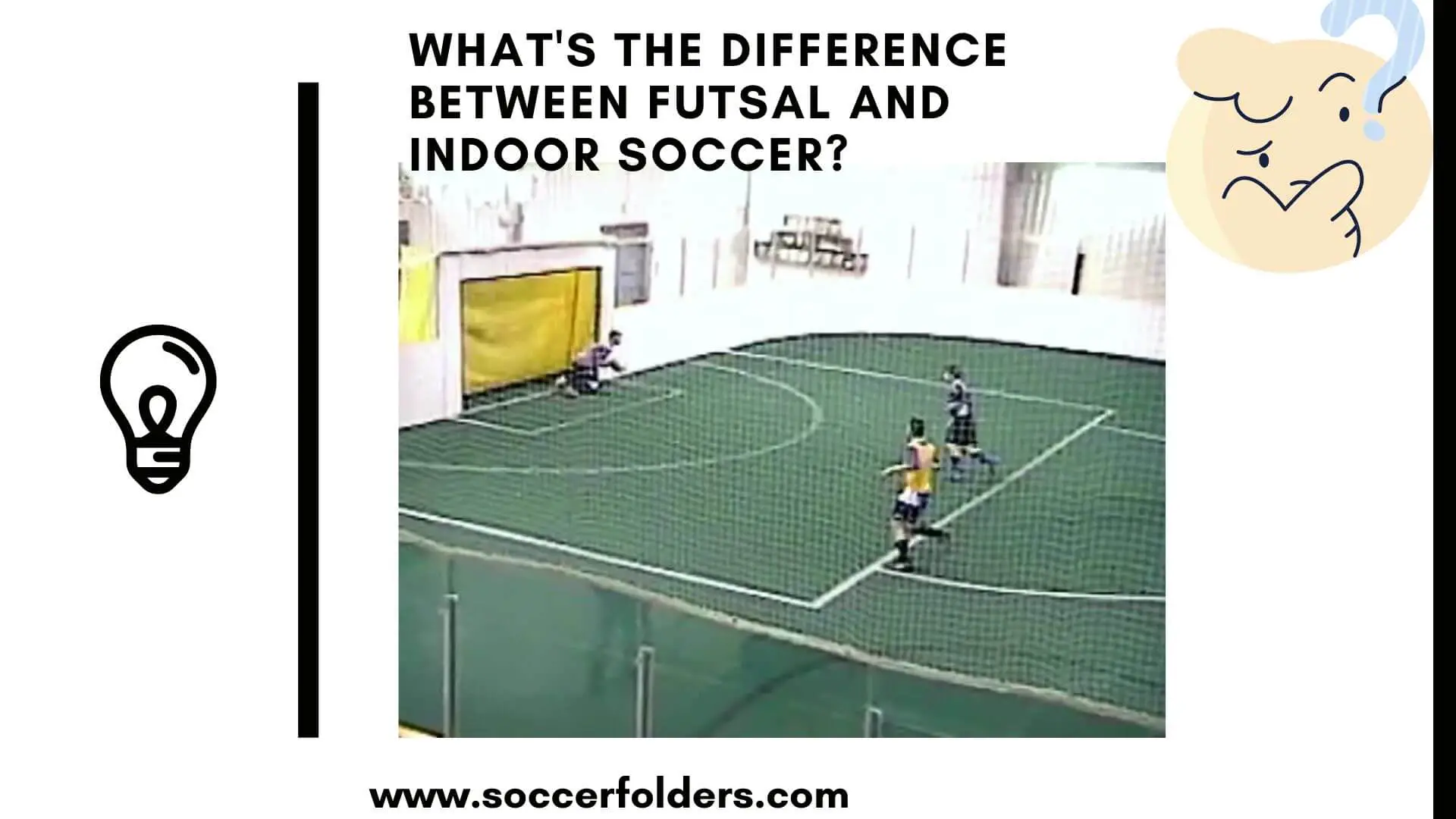Today, I’ll be delving into the difference between Futsal and indoor soccer, two sports that often get confused due to their similarities.
If you’re a fan of the beautiful game, you may have come across these terms and wondered how they differ. Well, you’re in the right place!
In this article, we will explore the unique characteristics of both sports, giving you a clear understanding of what sets them apart. Whether you’re a player looking to try something new or simply curious about the distinctions, we’ve got you covered.
From the size of the ball to the number of players on the field, we’ll break down each aspect, highlighting the advantages and disadvantages of each sport. So, get ready to dive into the exciting worlds of Futsal and indoor soccer as we unravel the differences that make each game special.
Let’s get started.
Quick Navigation
- What is the Difference Between Futsal and Indoor Soccer?
- Futsal vs Indoor Soccer: Definition and Origin
- Equipment Used in Futsal and Indoor Soccer
- Which is better, Futsal or Indoor Soccer?
- Advantages of Futsal:
- Disadvantages of Futsal:
- Advantages of Indoor Soccer:
- Disadvantages of Indoor Soccer:
- Final Thoughts
What is the Difference Between Futsal and Indoor Soccer?
The difference between Futsal and Indoor soccer is that Futsal is played with a smaller, heavier ball and fewer players on a smaller court, making for fast-paced, skill-focused play. And Indoor soccer is played with a larger, lighter ball and more players on a larger court, allowing for more strategic and teamwork-focused play.
Before diving deeper into those main differences, let’s have a quick overview of where both sports originated from.
Futsal vs Indoor Soccer: Definition and Origin
Futsal is a variant of soccer that is played on a hard court, typically indoors, with a smaller ball and fewer players than traditional soccer. The word “Futsal” comes from the Spanish word “futbol sala,” which translates to “indoor football.” The sport originated in Uruguay in the 1930s and has since gained popularity around the world, particularly in South America and Europe.
Indoor soccer, on the other hand, is a type of soccer that is played indoors on a turf or hard court with boards surrounding the playing area to prevent the ball from going out of bounds. The sport originated in North America in the 1970s and has since become popular in many countries around the world.
Now that we’ve defined both sports, let’s dive into the key differences between Futsal and indoor soccer.
Ball size and weight
One of the most noticeable differences between Futsal and indoor soccer is the size and weight of the ball used in each sport.
Futsal uses a smaller, heavier ball that is designed to stay low to the ground, making it easier to control and pass. The ball used in Futsal is typically made of leather or synthetic material and weighs between 400-440 grams.
On the other hand, indoor soccer uses a larger, lighter ball that is designed to bounce off the walls and move quickly. The ball used in indoor soccer is typically made of synthetic material and weighs between 410-450 grams.
Court size
Another key difference between Futsal and indoor soccer is the size of the court.
Futsal is played on a smaller court, typically between 25-42 meters in length and 16-25 meters in width. The smaller court size makes the game faster and more intense, with players having less time and space to make decisions.
Indoor soccer, on the other hand, is played on a larger court, typically between 45-55 meters in length and 25-30 meters in width. The larger court size allows for more room to manoeuvre and requires players to cover more ground.
Number of players
The number of players on the field is another key difference between Futsal and indoor soccer.
Futsal is played with five players on each team, including the goalkeeper. The smaller number of players on the field allows for more individual skill and creativity, as players have more opportunities to touch the ball and make an impact.

Indoor soccer, on the other hand, is typically played with six players on each team, including the goalkeeper. The larger number of players on the field allows for more teamwork and strategic play, as players have more options for passing and creating opportunities.
==>> Read everything there is to know about indoor soccer here!

Rules
While the basic rules of soccer apply to both Futsal and indoor soccer, there are some key differences in the rules of each sport.
In Futsal, there are no offside rules, and players are not allowed to slide tackle or use the walls to play the ball.
In indoor soccer, the walls are part of the game(depending on the region), and players are allowed to use them to their advantage. Additionally, in indoor soccer, there is a penalty box and a penalty shootout if the game ends in a tie.
Note that in some parts of the world, the walls are not part of the game in indoor soccer. That’s the case in Cyprus and other European countries, for instance.

==>> Read more about indoor soccer rules here.
| Aspect | Futsal | Indoor Soccer |
|---|---|---|
| Ball Size and Weight | Smaller, heavier ball | Larger, lighter ball |
| Court Size | Smaller court | Larger court |
| Number of Players | 5 players per team | 6 players per team |
| Offside Rule | No offside rule | Offside rule applies |
| Use of Walls | Not allowed | Walls are part of the game |
| Professional Status | Recognized by FIFA | Not recognized by FIFA |
| Playing Style | Skill-focused, fast-paced | Strategic, teamwork-focused |
| Field Type | Hard court | Turf or hard court |
Remember that Futsal is usually played on a hard court, while indoor soccer can be played on either turf or a hard court, depending on the facility and regional variations.
Equipment Used in Futsal and Indoor Soccer
In both Futsal and indoor soccer, specific equipment is required to ensure the safety of players and the smooth flow of the game. While there are some similarities, there are also key differences in the equipment used for each sport.
Futsal Equipment:
- Ball: Futsal is played with a smaller, size 4 ball, which is slightly heavier compared to a traditional soccer ball. The smaller size and weight of the ball allow for better control, quick passes, and precise ball manipulation.
- Shoes: Futsal shoes have non-marking rubber soles, providing excellent grip on indoor court surfaces without leaving scuff marks. The shoes have flat outsoles designed for quick movements, agility, and improved ball handling.
- Apparel: Players typically wear comfortable athletic attire, including shorts, jerseys or t-shirts, and socks. It is essential to wear shin guards to protect the lower legs from potential impacts and collisions.
- Court: Futsal is played on a hard court surface, usually made of wood or synthetic materials. The court dimensions are smaller than a traditional soccer field, creating a more dynamic and fast-paced environment.
Indoor Soccer Equipment:
- Ball: Indoor soccer is played with a larger, size 5 soccer ball, similar to the one used in outdoor soccer. The ball is typically lighter than a Futsal ball and designed for enhanced bounce and manoeuvrability on indoor surfaces.
- Shoes: Indoor soccer shoes, also known as turf shoes or indoor cleats, have specialized rubber soles with numerous small studs or patterns for optimal traction on turf or hard court surfaces. These shoes provide stability, control, and grip.
- Apparel: Similar to Futsal, players wear comfortable athletic attire suitable for indoor sports, including shorts, jerseys or t-shirts, and socks. Shin guards are essential for protection during physical play.
- Field Type: Indoor soccer can be played on either a turf or a hard court surface, depending on the facility and regional variations. Turf surfaces provide a more natural feel similar to outdoor soccer, while hard court surfaces may have different textures or variations.
Selecting the right shoes, wearing protective gear, and utilizing the specific ball for each sport contribute to an enjoyable and successful playing experience in both Futsal and indoor soccer.
Which is better, Futsal or Indoor Soccer?
The answer to this question ultimately depends on personal preference and what you’re looking to get out of the game.
Futsal is great for developing individual skill and technique, as players have more opportunities to touch the ball and create opportunities. The smaller court size and fewer players on the field also make for a faster-paced and more intense game.
Indoor soccer, on the other hand, is great for developing teamwork and strategic play, as players have more options for passing and creating opportunities. The larger court size and more players on the field allow for a more varied style of play.
It’s also worth noting that Futsal is recognized by FIFA as an official sport and is played at a professional level in many countries around the world. Indoor soccer, while popular in many countries, is not recognized as an official sport by FIFA and is not played at a professional level in the same way that Futsal is.
Let’s see the advantages and disadvantages of both Indoor soccer and Futsal to decide which one is better.
Advantages of Futsal:
- Skill Development: Futsal’s smaller court and heavier ball promote improved ball control, quick decision-making, and precise passing, enhancing players’ technical skills.
- Creativity and Technique: The reduced space in Futsal encourages players to think and act quickly, fostering creativity, close ball control, and technical proficiency.
- Quick Tempo: Futsal’s fast-paced nature develops players’ agility, speed, and ability to adapt to rapidly changing situations, making it an exciting and dynamic sport.
- Increased Involvement: With fewer players on the field, everyone has more opportunities to be actively involved in the game, promoting individual development and engagement.
Disadvantages of Futsal:
- Physical Demands: Futsal’s intense nature requires players to have good endurance, as the fast pace can be physically demanding, particularly for those not accustomed to high energy levels.
- Limited Space: The smaller court size can restrict players’ ability to execute long-range passes and moves, potentially limiting certain aspects of gameplay and strategic options.
- Reduced Physicality: Compared to outdoor soccer, Futsal places less emphasis on physical challenges and aerial duels, which may be a disadvantage for players who excel in those areas.
Advantages of Indoor Soccer:
- Teamwork and Strategy: Indoor soccer’s larger court and additional players allow for more strategic play, emphasizing teamwork, coordination, and positional awareness.
- Wall Play: The incorporation of walls in indoor soccer introduces a unique element, enabling players to use the walls for strategic passes and rebounds, adding an exciting dimension to the game.
- Physicality: Indoor soccer often involves more physical contact and aerial challenges, providing opportunities for players who thrive in physical play to excel.
- Goalkeeper Involvement: With a larger field and an extra player, indoor soccer often presents more goal-scoring opportunities, making it an engaging and thrilling experience for goalkeepers.
Disadvantages of Indoor Soccer:
- Reduced Individual Touches: The larger number of players on the field can result in fewer individual touches on the ball, limiting opportunities for players to showcase their individual skills.
- Longer Passing Distances: The larger court size in indoor soccer may make long-range passing more challenging, as players have to cover more ground and adjust their passes accordingly.
- Adaptation to Walls: Utilizing the walls effectively can be a learning curve, and inexperienced players may struggle initially to take full advantage of the added dimension in gameplay.
- Less Futsal-Specific Skill Development: While indoor soccer offers its own set of skills, players seeking to develop specific Futsal-related techniques may find indoor soccer less focused on those aspects.
It’s essential to note that the advantages and disadvantages mentioned can vary based on individual preferences, playing style, and the level of competition.
Final Thoughts
In conclusion, while Futsal and indoor soccer may seem similar at first glance, there are some key differences between the two sports. From the size and weight of the ball to the number of players on the field, each sport offers a unique playing experience.
Ultimately, the choice between Futsal and indoor soccer comes down to personal preference and what you’re looking to get out of the game.
So, whether you’re a fan of the fast-paced, intense play of Futsal or the strategic, teamwork-focused play of indoor soccer, there’s a soccer variant out there for you.
You can also read the difference between indoor and outdoor soccer here.

